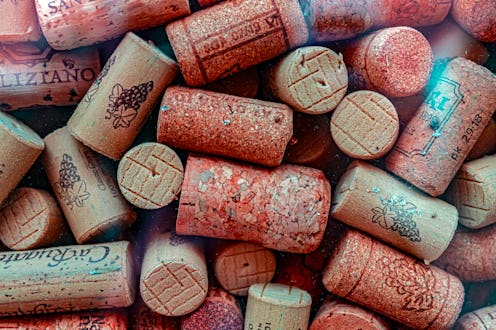Life
How Drinking Corked Wine Helps The Environment

The average wine consumer probably doesn't put a lot of thought into the origins of their wine bottle stopper — chances are they're only thinking about the cork for the few seconds it takes to remove and dispose of it. Maybe much to your surprise, wine corks are saving forests and the birds. Yes, as it turns out wine corks were not brought here by a cork stork, they in fact were harvested from the bark of a tree called the Cork Oak, found in the western Mediterranean. The bark, which is treated, dried and cut into the shape you see it as, spends a lot of time maturing before it's ready to be stripped for processing. Because of this long process, the trees are given exceptional care for decades. The lush Cork Oak forests become paradise to a variety of birds who have come to rely on the healthy tress for a home. The survival of these birds depends on the trees, which might soon become endangered by the increasing popularity of plastic corks.
Eighty-five percent of the world's Cork Tree bark is sent to Portugal for processing. This industry of natural cork accounts for three percent of Portugal's economy — another victim of the shifting popularity of plastic corks. Why plastic, you ask? Well, despite the fact that we've been relying on cork stoppers since the 1600s, a more modern bacteria-reducing process once changed the way the natural cork interacted with the wine and tainted the reputation of corks. The corks were treated with chlorine to inhibit the growth of bacterias and to enhance the physical appearance of the cork. The teeny tiny bit of chlorine residue that was left on the cork could become the host to a type of naturally occurring chemical agent that could alter the taste of the wine — we know this as TCA (trichloroanisole).
While TCA is not harmful to ingest, it can squash some important tasting notes in the wine. The slight, but noticeable flavor the mold adds is actually something that we're very used to. Personally, that "cardboard box" taste it creates is something that I assumed was present in all wine. As you might have guessed, plastic corks do not allow for TCA to grow on them, which is why the industry standard has hinted at leaning that way. At this point, only one in every twenty bottles of wine are corked with plastic, but as with most plastic trends, they are fast growing. But here's an important factoid, for the last twenty years, wineries have stopped using chlorine to treat their corks. So if TCA is present in a batch of wine, it's not because of the cork stopper. TCA can grow on literally every surface at a winery and is often present in wine bottles with plastic stoppers.
So what can you do to avoid being a bird killer and economy damper? You can make sure the wine you buy is naturally corked, that's how! Seriously, one of the most effective ways of helping to keep the industry standard natural cork, is to avoid supporting wines that use unnatural corks. Find your naturally corked wines and other ways to avoid plastic here and always check the label of the wine for a "Real Cork Inside" logo. And watch The Engineer Guy, Bill Hammack talk about natural cork here:
Images: Alphotographic/iStock Unreleased/Getty Images; Giphy,